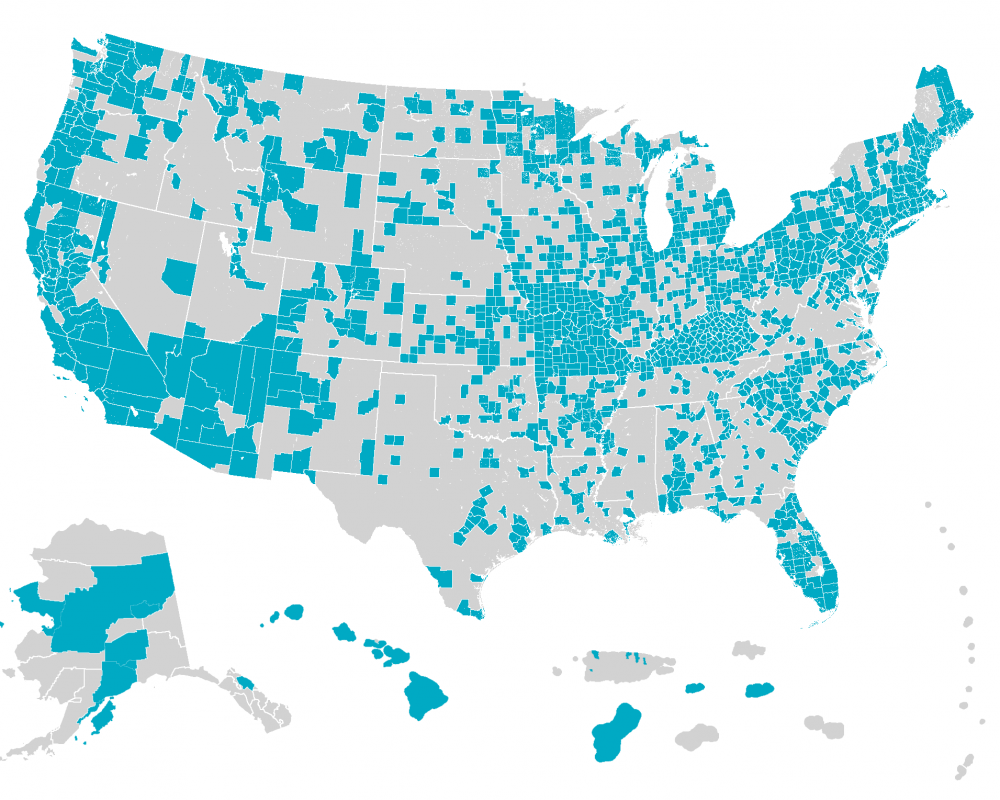
This blog post is the second in our two-part look at home visiting’s current and potential reach. The first post examined how to expand home visiting’s reach through demographic and economic data.
Early childhood home visiting programs benefit caregivers and their children. Participating adults receive help becoming financially self-sufficient and are more likely to be employed or enrolled in school than their counterparts. Infants whose mothers are enrolled in home visiting are more likely to be born full term and to grow up in safer home environments.
Despite this demonstrated effect, evidence-based home visiting programs are in less than half of U.S. counties, leaving many eligible families unable to access services. States have limited funding and must piece together federal, state, and private dollars to serve families they consider a priority. Geography can also pose a challenge, especially in rural areas where home visitors travel long distances to see one family. The reach of home visiting varies widely from state to state.
[Read the 2017 Home Visiting Yearbook for more information on home visiting’s demonstrated impact.]
Examining Coverage by County
In Kentucky, eligible new parents can receive home visiting through the Health Access Nurturing Development Services Program, no matter which county they live in. Smaller states like Connecticut and Rhode Island also have home visiting programs in every county. But this widespread availability is not the norm. In most states, evidence-based home visiting programs are found in 25 to 75 percent of counties.
Patterns of coverage by county paint a picture of home visiting availability, but they overlook differences in geographic size, population, and service. Georgia and North Carolina have a similar population size, but Georgia residents are spread across 159 counties compared with North Carolina’s 100. Moreover, a single county could have one evidence-based program that serves 40 families or three programs that serve 400.
[Read the first post in this series to learn about targeting criteria used to identify families in need.]
Taking a Closer Look: Mississippi’s Home Visiting Needs and Services
Across the country, the number of potential beneficiaries exceeds the number of families served. But some areas have higher needs than others. Many families in Mississippi could benefit, as 64 percent of potential beneficiaries in the state met at least 1 of 5 home visiting targeting criteria in 2015:
- 35 percent of families were in poverty
- 32 percent were headed by a single mother
- 14 percent had parents without a high school diploma
Mississippi families also reported several poor outcomes that home visiting aims to prevent, including preterm births, infant mortality, and child emergency room visits because of an accident or injury. Despite the state’s substantial need, only 703 of 181,100 families received home visiting services in 2015 through one of the state’s 18 local implementing agencies.
[Visit the Home Visiting by State page to access state and territory profiles that highlight potential beneficiaries and their characteristics.]
Many more families across the United States—including those identified as high priority—could benefit from home visiting. Understanding geographic disparities can help those looking to strengthen and expand services know where to concentrate their efforts.